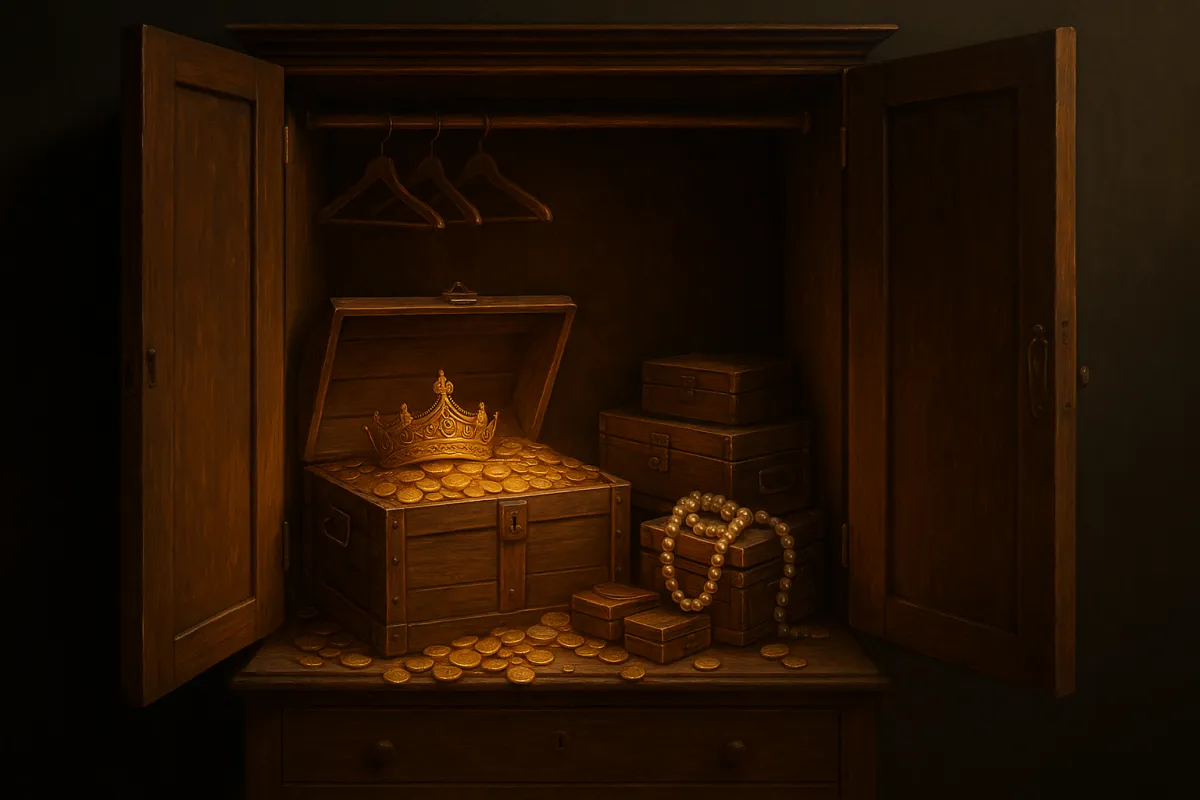Increase the Revenues of Your Waste Company With the Tips Shared in Our Blog Articles

America’s Hidden Mines: How Landfills, Closets, and Data Centers Can Shield the U.S. From the Next Critical Minerals Crisis
Every country has a choice when global supply chains start to shake: panic, or prepare.
The United States already tasted what happens when a foreign power controls the minerals that feed your technology, your defense systems, and your industrial backbone. Anyone who lived through the last round of export restrictions from China knows exactly what I’m talking about.
That same scenario, with new intensity, is coming back.
And here’s the part nobody in Washington, Silicon Valley, or even most recyclers seems ready to embrace:
The fastest, richest, and most secure sources of critical minerals aren’t in the ground… they’re in America’s waste.
As an alchemist of waste—someone who has built his entire career transforming discarded material into high-value raw inputs—I can tell you with absolute certainty that the U.S. is sitting on a massive reserve of resources. Not theoretical. Not futuristic. Not under 300 meters of rock.
Real materials. Buried, forgotten, abandoned, stored, or simply ignored.
The problem isn’t the mineral supply.
The problem is awareness and strategy.
Today I want to walk you through the reality: what’s already available inside U.S. territory, how waste companies and smart operators can unlock it, and why this is the moment to move before shortages tighten again.
Let’s start from the beginning—literally underground.
1. The Buried Treasure Nobody Talks About
Across the United States there are over 8,000 closed landfills, plus another few thousand still active. People look at them as liabilities: methane, odors, old trash, political issues.
I look at them as silent treasure vaults.
Inside a 40-year-old landfill you’ll typically find:
Thousands of tons of steel, aluminum, and copper from old appliances
Mountains of obsolete electronics that contain gold, silver, palladium, and rare earth magnets
Historic waves of construction and demolition waste rich in metals
Buried vehicles, wiring, motors, transformers
Industrial equipment no one bothered to process properly
In many sites, the layers are so distinct you can literally read the history of American manufacturing by decade.
And the numbers? Brutal.
A single medium-size landfill can contain:
4,000–7,000 tons of recoverable metals
300–500 tons of copper
5–15 tons of precious metals in old PCBs
Massive volumes of magnets containing neodymium, dysprosium, praseodymium
High-value plastics and carbonized compounds
Multiply this by thousands of landfills and you begin to understand the scope.
Here’s the painful truth:
America doesn’t lack raw materials.
America lacks the will to extract them.
Opening these landfills with modern methods—geophysical mapping, targeted excavation, advanced separation—can turn old burial grounds into fully operational mines without the headaches of traditional exploration. You’re not blasting rock. You’re recovering material someone already paid to throw away.
That’s the first mine.
But the second one is even bigger.
2. The Largest Untapped Mine in American History Is in People’s Homes
I cannot repeat this enough:
Inside every American home there is metal worth more than most people imagine.
Old phones in drawers.
Laptops stacked in closets.
Game consoles from 2005.
Dead routers. Broken TVs.
The forgotten first-generation iPod that should be in a museum.
Every one of those devices contains:
Copper and aluminum
Gold, silver, palladium
Rare earth magnets
Tantalum, cobalt, nickel
High-value components ready for secondary markets
When I say “mine,” I mean it technically. The grade of metals inside consumer electronics is higher than many primary ores. And unlike natural ore, you don’t need heavy extraction to release them—you just need the device in your hands.
The challenge is simple:
Americans aren’t giving them up.
And why should they? Nobody is asking them clearly or consistently. Waste companies rarely run direct-response campaigns. Cities run “e-waste days” once a year and expect miracles. Retailers do trade-ins only when it suits their quarterly marketing plan.
Meanwhile, hundreds of billions of dollars in materials sit idle.
This is the moment where the alchemist mindset is needed.
Because we don’t need to convince people with long speeches.
We need one thing: a compelling offer.
Cash. Credits. Bill reductions.
Clear messaging.
Zero friction.
Turn the process into what I call The Great American Device Extraction—a coordinated system to unlock the materials already purchased, already shipped, already within national borders.
If China closes the tap, these devices become even more valuable. And those who control the flow of recovered electronics become the new suppliers to U.S. manufacturers.
That’s the second mine.
And now we go deeper.
3. The Forgotten Fort Knox: U.S. Warehouses, Data Centers & Corporations
Every large corporation, data center, public institution, university, and federal building in the country has the same problem:
piles of old hardware.
They don’t know what to do with it.
They’re afraid to dispose of it.
They don’t have the time to organize it.
And data security keeps them paralyzed.
But inside these storage rooms you find:
High-grade servers full of gold, silver, palladium
Massive rare-earth magnets inside hard drives
Wiring systems rich in copper
Industrial batteries with cobalt and nickel
Network equipment loaded with valuable boards
Electric panels and components that can be recovered at high margin
I’ve seen warehouses with millions in materials that nobody touches simply because the institution doesn’t want the headache of sorting.
This is the third mine.
And it’s the easiest to access if you approach it with the right system:
valuation, secure collection, data wiping, material extraction, revenue share.
When done properly, corporations love it because it turns a liability into cash.
4. The Alchemist’s Approach: Turning Chaos Into a Controlled Flow of Raw Materials
If you want to protect the U.S. against the next mineral crisis, you don’t need speeches. You need architecture.
Here’s how the real alchemy happens:
Step 1 – Identify the Materials
Copper in motors, wiring, HVAC
Rare earth magnets in HDDs, motors, fans
Gold, silver, palladium in boards
Lithium, cobalt, nickel in batteries
Aluminum in every old appliance
High-grade plastics and composites
Step 2 – Control the Collection Points
You don’t wait for people to drop off devices:
you create demand for dropping them off.
Campaigns. Incentives. Partnerships with telecoms, retailers, utilities, schools, colleges, data centers.
When you control the feedstock, you control the future.
Step 3 – Build Pre-Processing Hubs
Not giant fancy facilities.
Smart, agile hubs that:
Remove batteries
Extract magnets
Sort high-value PCBs
Prepare fractions for specialized refiners
Ship consistent-quality materials to U.S. manufacturers
The U.S. doesn’t need to own the entire chain.
It needs to own the front door.
Step 4 – Sell Not Waste… but Raw Materials
This is where the alchemist becomes the merchant.
You supply manufacturers, not landfills.
You sell copper, not scrap.
Magnets, not junk.
Black mass from batteries, not mixed waste.
Companies pay premiums for controlled, stable, domestic supply.
And you become their supplier of certainty.
5. Why This Matters Now
When a country depends on a single foreign power for strategic minerals, it’s not just vulnerable—it’s predictable.
The next shortage isn’t an “if.”
It’s a “when.”
But here’s the good news:
Americans already bought the materials the U.S. needs.
They bought them when they purchased smartphones.
When they upgraded laptops.
When they replaced HVACs, TVs, washers, servers, cars, and tools.
The real challenge is claiming those materials back.
Waste companies can do it.
Landfill owners can do it.
Municipalities can do it.
Private operators can do it.
But only if they understand this:
The future of American mineral independence isn’t under the soil.
It’s in the waste stream.
And whoever controls that stream will control the next industrial revolution.
If you’re ready to plan, build, or launch your own critical minerals recovery project, I can help you design the full strategy—from sourcing to processing to market positioning.
Because in times like these, the alchemist doesn’t wait.
The alchemist acts.
To Your Success
Sam Barrili
The Waste Management Alchemist


© 2025 Marketing4waste - All Rights Reserved,
Marketing4Waste is a brand of MiM MarketingInterimManagers LLC
+1 801 804 5730

